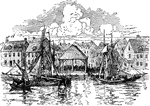
Seal of Rhode Island
The Seal of the State of Rhode Island and Providence Plantations, 1636. The seal shows a maritime anchor…
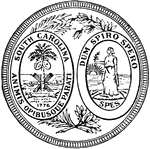
Seal of South Carolina
The Great Seal of the State of South Carolina. The seal shows two ovals with palmetto tree branches.…

Seal of South Dakota
The Great Seal of the State of South Dakota, 1889. The seal shows hills, a river and a boat, a farmer,…
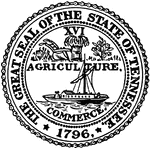
Seal of Tennessee
The Great Seal of the State of Tennessee. The seal shows images such as wheat and a plow to represent…

Seal of Texas
The Seal of Texas. The seal has simply a star which is a common symbol of Texas, an olive branch, and…

Seal of Utah
The Great Seal of the State of Utah, 1896. The seal shows a bald eagle holding a shield. The shield…

Seal of Vermont
The Great Seal of Vermont. The seal depicts a pine tree in the center with grain sheaves and a cow at…
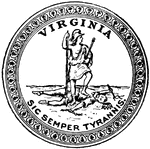
Seal of Virginia
The Seal of Virginia. The seal shows a Virtus standing over the defeated Tyranny with his fallen crown.…

Seal of Washington
The Seal of the State of Washington, 1889. The seal contains a portrait of George Washington and the…

Seal of West Virginia
The Seal of the State of West Virginia. This seal depicts two men representing agriculture and industry…

Seal of Wisconsin
The Great Seal of the State of Wisconsin. The seal shows a sailor and a yeoman holding the state's coat…

Seal of Wyoming
The Great Seal of the State of Wyoming. The seal shows two men symbolizing livestock and mining next…
British Works at Yorktown
The Siege of Yorktown or Battle of Yorktown in 1781 was a decisive victory by a combined assault of…
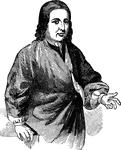
Nicolaus Ludwig Zinzendorf
Nikolaus Ludwig von Zinzendorf und Pottendorf, Imperial Count of Zinzendorf and Pottendorf, (May 26,…

Sea Raven
The Sea Raven (Hemitripterus americanus) is a bottom-dwelling fish that is common in the north of the…

Ellsworth Zouave
Zouave was the title given to certain infantry regiments in the French army, normally serving in French…
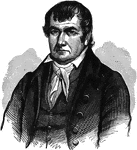
James Robertson
James Robertson (June 28, 1742–September 1, 1814) was a North Carolina farmer and explorer of the…
Oarweed
Oarweed or Tangle (Laminaria digitata) is a species of kelp common to the British Isles and Northeast…
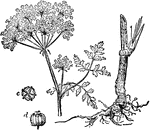
Northern Water Hemlock
Northern Water Hemlock is a species of Cicuta, native to northern and central Europe, northern Asia…

Hercules Beetle
The Hercules beetle (Dynastes hercules) is the most famous of the rhinoceros beetles. Native to the…
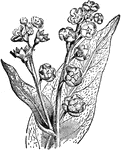
Hound's Tongue
Cynoglossum officinale (hound's tongue, dog's tongue, gypsy flower, and rats and mice due to its smell)…
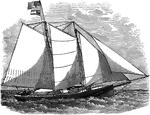
The Savannah, Confederate Privateer
The Confederate privateers were privately owned ships that were authorized by the government of the…
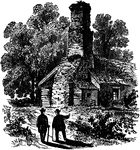
Remains at Fort Schlosser
Fort Schlosser was a fortification built in Western New York in the USA around 1760 by British Colonial…

William Rufus Shafter
William Rufus Shafter (October 16, 1835 – November 12, 1906) was a Union Army officer during the…
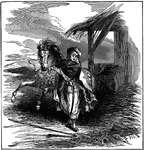
Smith's Escape from Slavery
Captain Sir John Smith (c. January 1580–June 21, 1631) Admiral of New England was an English soldier,…
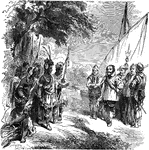
Smith's Meeting with Powhatan
The meeting between Capt. John Smith, founder of the Virginia colony, and Powhatan, the chief of the…
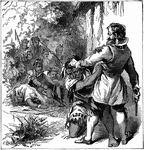
Smith Subduing Powhatan
The meeting between Capt. John Smith, founder of the Virginia colony, and Powhatan, the chief of the…

Fulton's Clermont
In 1807, Fulton and King built the first commercial steamboat, the North River Steamboat (later…

Alexander Hamilton Stephens
Alexander Hamilton Stephens (February 11, 1812 – March 4, 1883) was an American politician from Georgia.…
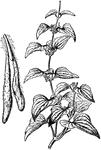
Yam
Yam is the common name for some species in the genus Dioscorea (family Dioscoreaceae).These are perennial…

Juniper
An illustration of a juniper branch, vertical section of fruit (1), and male catkin (2). Junipers are…

Horseshoe Crab (Adult)
An illustration of an adult horseshoe crab from the dorsal aspect. The horseshoe crab or Atlantic horseshoe…
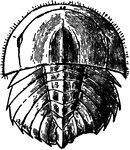
Horseshoe Crab (Young)
An illustration of a young horseshoe crab from the dorsal aspect. The horseshoe crab or Atlantic horseshoe…

French Gothic Capital
A fifteenth century capital from the north spire of Chartres. The capitals were tall and slender, concave…

Horizontal Dial
The chief advantages of the horizontal sundial are that it is easy to read, and the sun lights the face…

Sundial
A sundial is a device that measures time by the position of the Sun. In common designs such as the horizontal…
Diplodocus
An illustration of a Diplodocus skeleton and the caudal vertebrae (A and B). Diplodocus is a genus of…
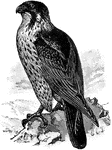
Duck Hawk
The Peregrine Falcon (Falco peregrinus), also known simply as the Peregrine, and historically as the…
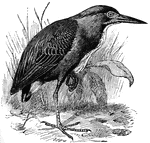
Green Heron
The Green Heron (Butorides virescens) is a small wading bird in the Ardeidae family of herons, and is…

Common Shrimp
The Common Shrimp (Crangon crangon) is a shrimp fished mainly in the North Sea. The species is also…
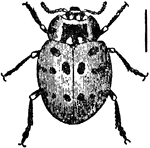
Ladybug
Coccinellidae is a family of beetles, known variously as ladybirds (British English, Australian English,…
Silver Fir Cone and Foliage
An illustration of a silver fir cone and a small branch. Silver Fir or European Silver Fir (Abies alba)…

Rainbow Smelt
The Rainbow Smelt (Osmerus mordax) is a North American fish in the Osmeridae family of smelts named…

Vermilion Snapper
The Vermilion Snapper (Rhomboplites aurorubens) is a North American and Atlantic fish in the Lutjanidae…
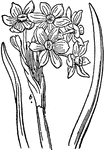
Narcissus
Narcissus is the botanic name for a genus of mainly hardy, mostly spring-flowering, bulbs in the Amaryllis…
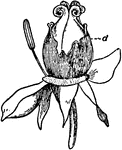
Peony Bud
Paeonia) is the only genus in the flowering plant family Paeoniaceae. They are native to Asia, southern…
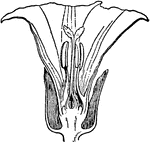
Calystegia Sepium
Calystegia sepium (Larger Bindweed, Hedge Bindweed, or Rutland beauty) is a species of bindweed, with…

Calystegia Sepium Bud
An illustration of a Calystegia sepium bud. Calystegia sepium (Larger Bindweed, Hedge Bindweed, or Rutland…
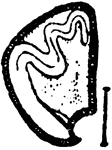
Calystegia Sepium Seed
An illustration of a Calystegia sepium seed cut lengthwise showing the embryo. Calystegia sepium (Larger…
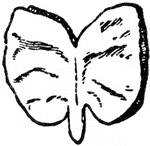
Calystegia Sepium Embryo
An illustration of a Calystegia sepium embryo. Calystegia sepium (Larger Bindweed, Hedge Bindweed, or…
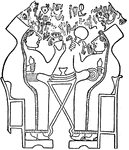
Hittite Women
An illustration of two Hittite women sitting. The Hittites were an ancient Anatolian people who spoke…

Velvet Crab
The velvet crab (alternatively velvet swimming crab or devil crab) is the largest swimming crab found…

Masked Crab
Corystes cassivelaunus, the masked crab, helmet crab or sand crab, is a burrowing crab of the North…

Annual Honesty
Annual Honesty (Lunaria annua) is a tall (height about 1 m), hairy-stemmed biennial plant found throughout…
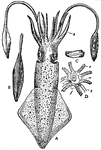
European Squid
The European Squid (Loligo vulgaris) is a large squid belonging to the family Loliginidae. It occurs…
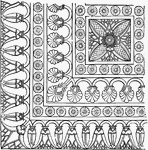
Part of the Floor Decoration from North Palace, Nineveh
This portion of a pavement-slab in the North Palace at Nineveh has a certain accordance with the Grecian…

Floor Plan of the Palace at Nimrud
One peculiarity is visible in all Assyrian buildings, namely, that all the chambers are very narrow…

Willow Canker
"Scleroderris fuliginosa. a, immature ascocarps ... S. fuliginosa is said to be parasitic on twigs and…

